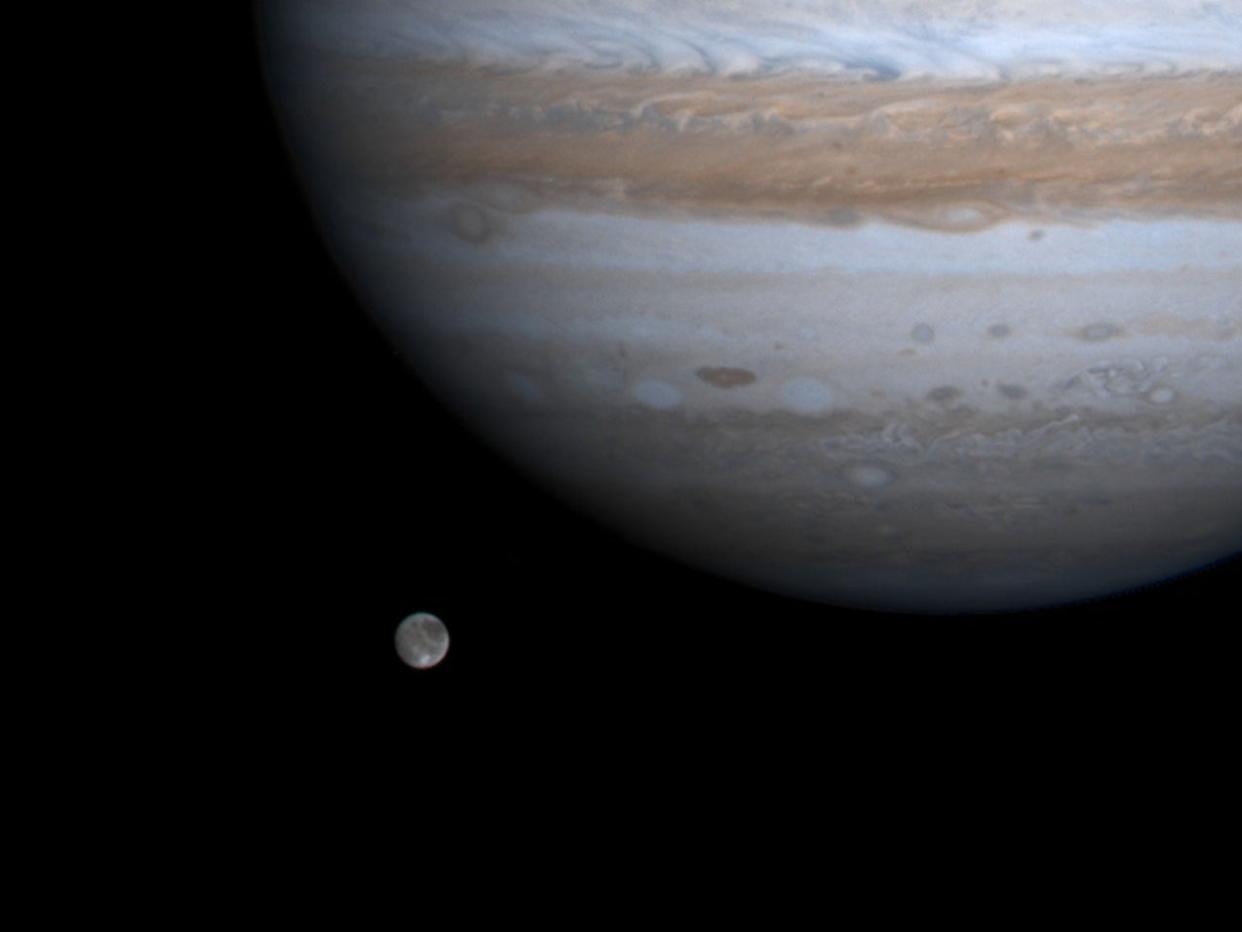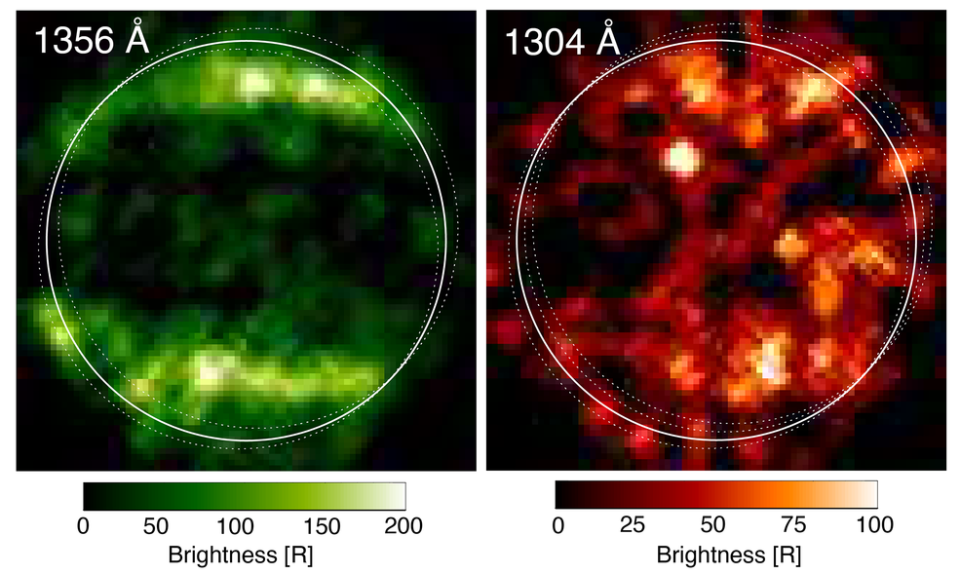Scientists discover water vapour on Jupiter’s moon Ganymede

Scientists have found evidence of water vapour in the atmosphere of Jupiter’s moon Ganymede – the first time such a discovery has ever been made.
Using two decades of data from Nasa’s Hubble Space Telescope, which the space agency recently succeeded in bringing back online after a computer glitch, astronomers noticed a strange phenomenon in the ultraviolet images they took of the Jovian moon.
The first images, from 1998, captured brightly-coloured ribbons of electrified gas known as auroral bands from Ganymede. Astronomers at the time believed that this was due to the presence of oxygen, but the data gathered did not match the expected emissions of a body that had an atmosphere made of pure oxygen.
This strange information was believed to be caused by the high concentration of atomic oxygen (oxygen with only one molecule) but this could not have been further from the truth – in fact, there is hardly any atomic oxygen in Ganymede’s atmosphere.
Lorenz Roth, of the KTH Royal Institute of Technology in Sweden, made this discovery with his team using data from Hubble’s Cosmic Origins Spectrograph in 2018 and archival images from the Space Telescope Imaging Spectrograph (STIS) from 1998 to 2010.
Closer examination of the distribution of aurora in the ultraviolet images suggested that the moon’s icy surface turns into vapour without becoming a liquid first (a process known as sublimation) to produce small amounts of water molecules in the atmosphere.
"So far only the molecular oxygen had been observed," said Roth. "This is produced when charged particles erode the ice surface. The water vapor that we measured now originates from ice sublimation caused by the thermal escape of water vapor from warm icy regions."

With the European Space Agency’s Juice mission (the JUpiter ICy moons Explorer) planned to launch in 2022 and arrive at Jupiter in 2029, this new information will allow the ESA to refine their observation plans.
The Juice mission will spend three years observing Jupiter and its three largest moons: Ganymede, Europa, and Callisto.
Ganymede also has potential to be a habitat for future human exploration, and although it is subject to seven hundred times more natural radiation than Earth and one hundred times that of Mars – too much for humans to live on the moon – it is possible that astronauts would be able to explore the surface for short periods of time if they had sufficient protection.
With a greater understanding of Jupiter and its history, astronomers will be able to get a better understanding of how the gas giants form and evolve too – shedding more light on the mysteries of our place in the universe.
Read More
Nasa telescope spots mysterious ‘free-floating planets’ not attached to any solar system
Buck Moon: Why tonight’s full Moon has such an unusual name
Scientists finally understand Mars’s crust after Nasa mission examines ‘Marsquakes’

 Yahoo News
Yahoo News 
